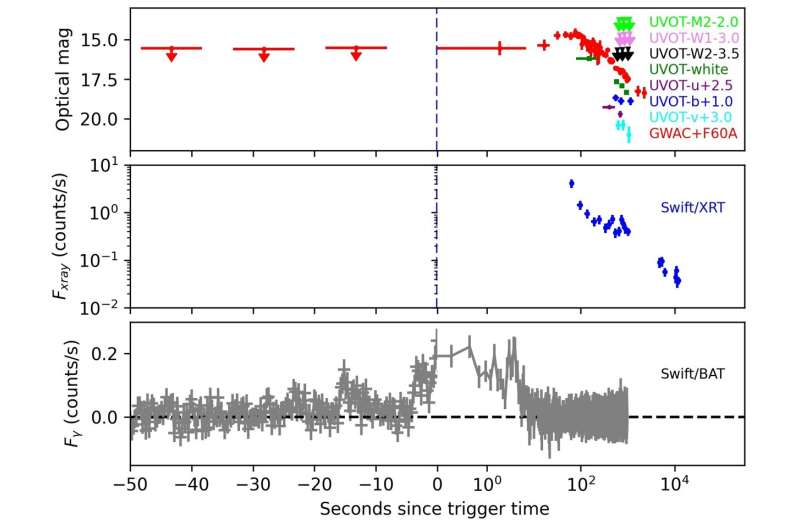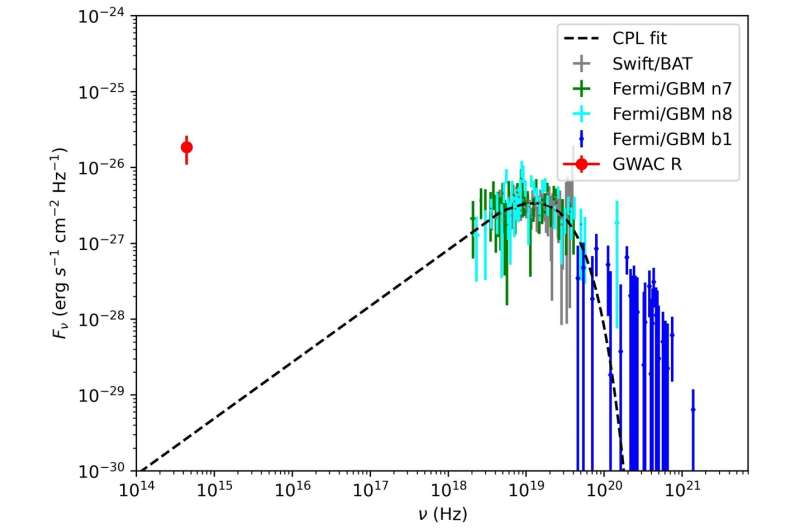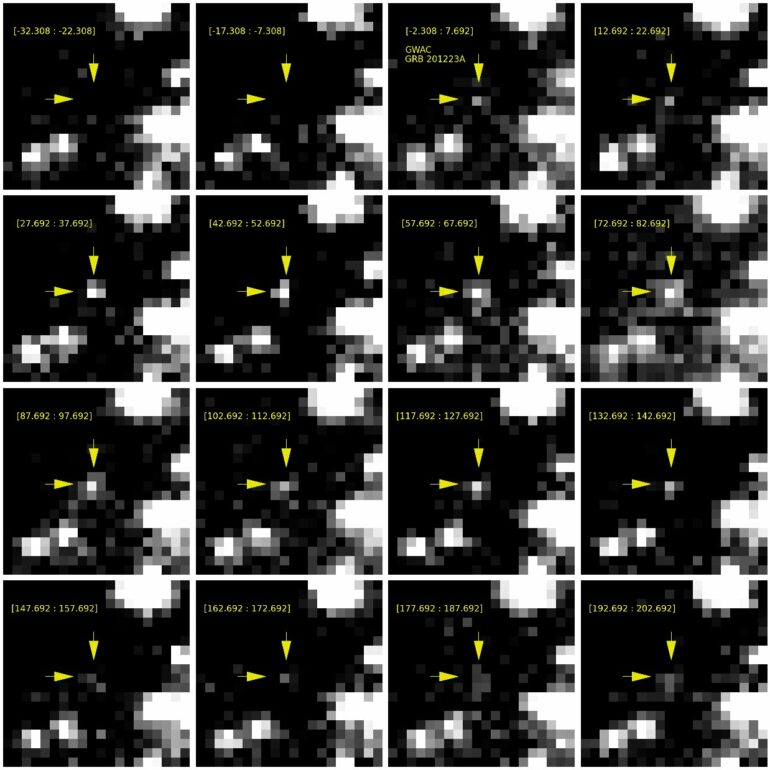Researchers led by Dr. Xin Liping from the Space-based Multi-band Astronomical Variable Objects Monitor (SVOM) research team, National Astronomical Observatories of the Chinese Academy of Sciences (NAOC), have detected the prompt optical emission and its transition to the early afterglow of a gamma-ray burst (GRB 201223A), using the Ground Wide Angle Camera Array (GWAC) located at Xinglong Observatory of NAOC. The study was published in Nature Astronomy on April 10.
Gamma-ray bursts (GRBs) are produced by the collapse of massive stars or the merger of binary neutron stars. They are accompanied by extreme relativistic jets emitting enormous amounts of energy within a few seconds of the bursts. This phenomenon includes the prompt emission caused by the shock in the jet and the afterglow produced by interaction between the jet and external medium.
Typical high-energy emission lasts only a few milliseconds to tens of seconds, and it is difficult to follow up in real time when ground-based optical telescopes receive alerts triggered by space-based high-energy instruments. Until now, only a few cases of optical emission have been detected before the end of prompt high-energy emission. These GRBs have longer duration of high-energy emission (>30 seconds). Furthermore, all these measurements were contaminated with reverse shock, making it difficult to clearly review the transition from prompt emission to afterglow.
GWAC, proposed and led by Prof. Wei Jianyan, principal investigator of the SVOM mission, is one of the key ground-based telescopes for the SVOM project. It can cover an ultra-large sky area with a temporal resolution of 15 seconds and a detection capability of magnitude 16. Its scientific purpose is to conduct systematic research on the prompt optical emission of GRBs discovered by the SVOM mission.

The optical, X-ray and gamma-ray light curves of GRB 201223A. The red data in the upper panel was obtained by GWAC and F60A. © NAOC
In this study, GWAC recorded the entire process—before, during and after the trigger time of the burst. The duration of the high-energy emission was 29 seconds. The emergence of optical and gamma-ray emissions was detected simultaneously.
“The prompt optical emission is far brighter than expected by about four orders of magnitude, if only gamma-ray emission is analyzed, which requires a special physical interpretation for these measurements,” said by Dr. Xin.
According to joint analysis using the follow-up observations by F60A, an optical telescope jointly operated by NAOC and Guangxi University, the complete transition from prompt optical emission to afterglow was clearly achieved without any contamination from reverse shock.

Spectral energy distribution of GRB201223A. The data from GWAC in red is higher than the value extrapolated from the best model for gamma-ray emission by about four orders of magnitude. © NAOC
The extremely early unique data provided by GWAC place a fine constraint on the characteristics of the progenitor. Scientists expect strong stellar winds around a massive star, which is thought to be the ideal progenitor of a gamma-ray burst. However, the stellar wind is quite small for this event, even at a very close distance from the burst, thus suggesting the progenitor has a small stellar mass.
After the launch of SVOM, simultaneous observations by GWAC and SVOM space-based instruments will have the potential to provide essential data for GRB studies, and finally a large sample with prompt optical observations will be built during the SVOM mission.
More information:
Liping Xin et al, Prompt-to-afterglow transition of optical emission in a long gamma-ray burst consistent with a fireball, Nature Astronomy (2023). DOI: 10.1038/s41550-023-01930-0
Provided by
Chinese Academy of Sciences
Citation:
Ground wide angle camera array detects prompt optical emission of gamma-ray burst (2023, April 28)



